(This is the first entry in the “American Refugees” Substack of Roger Simon and Sheryl Longin that begins Aug. 8, 2024.)
It was somewhere around 12:35 a.m. on July 21 that my wife Sheryl Longin, co-author of our brand new Substack, awakened me after I had barely fallen asleep in our hotel room in Arusha, Tanzania.
“Biden’s withdrawn,” she was saying. “He’s endorsed Kamala.”
In my stupor, halfway around the world and with my hearing aids out, I had trouble making immediate sense of her words, but she was right to wake me for this. I would have been annoyed if she hadn’t.
Although Biden's withdrawal was predictable, we had been hoping he wouldn’t endorse his V.P. to add more chaos to the Democratic side. No such luck.
Everything was so near and yet far away. Or was it the reverse?
At that point we had only arrived hours before at Arusha’s Kilimanjaro Airport from Addis Ababa, Ethiopia in something of a frustrating journey from our home in Nashville, Tenn.
As readers recall, on July 19, a CloudStrike computer glitch grounded all flights in the USA and shut down banks and other institutions as far as Australia. That included us, whose 6 a.m. United flight to Chicago, where we were to board Ethiopian Airlines for Addis, finally took off around nine, three hours late. We assumed we’d still make it since flights were being canceled everywhere. They would wait.
Not so. As it turned out, Ethiopian and Turkish Air were the only two airlines to fly out of O’Hare that morning. So we spent an extra night in a Chicago airport hotel and flew to Africa the next morning, missing a day in Arusha intended to alleviate jet lag.
Making matters worse, after barely sleeping, we had to get up before 5 a.m. to catch a bush plane to Mahale National Park.
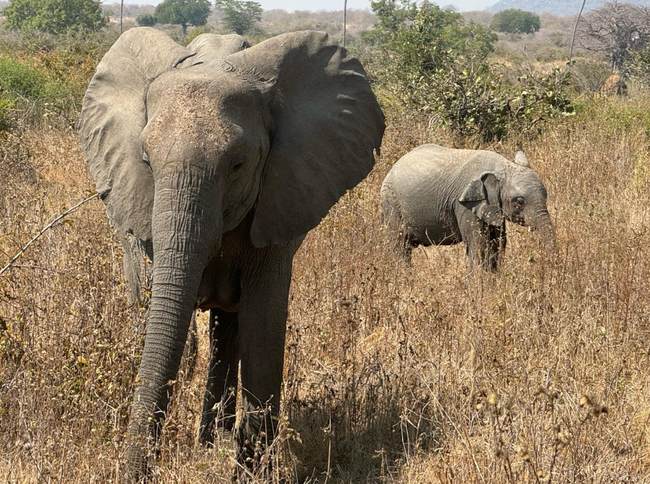
This was all for a safari we had been planning for the better part of a year for our thirtieth anniversary.
I didn’t sleep much that first night, wondering if this was really the time to leave America, but on the bush plane flying low over the Tanzanian countryside, I realized that it was. This was nothing new. Not just American but human history itself was one extended crisis or war after another. Just ask Victor Hanson. I wasn’t going to let the most recent one stop me from visiting a part of the world I had never seen.
As a writer who traveled as often as I could when I was younger, I had been neglecting the adventure-seeking side that had led me to Communist China in the Seventies with everyone still in Mao suits, trekking in the Himalayas and even to Siberia in snowbound February (it was surprisingly beautiful, the Gulag notwithstanding). COVID hadn’t helped.
When you’re on a bush plane—puddle jumpers that really stop for gas or to pick people up, much like a bus—flying low over Africa, the mind naturally turns to that man who made that jaunt long before, when it was considerably riskier, Ernest Hemingway, speaking of Kilimanjaro and the snows thereof. The copyright date on “The Green Hills of Africa”—one of the few books of his I had not read but was now catching up on my Kindle—is almost a hundred years ago, 1934. The propeller-driven puddle jumper he flew on didn’t have a computer guidance system, as ours did, but other than that, it couldn‘t have been all that different. (It wasn’t until I got home that I discovered the author had crashed twice back then. A lot of what Hemingway wrote was only slightly disguised autobiography.)
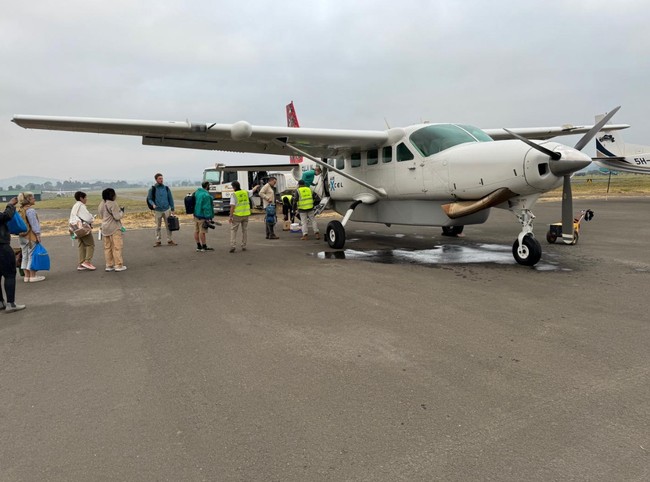
The puddle jumper we were on had about a dozen passengers, some of whom were also staying at our destination, the stunningly rustic Greystoke Mahale camp belonging to the Nomad safari outfit. But before we got there, we had yet another few hours on a dhow.
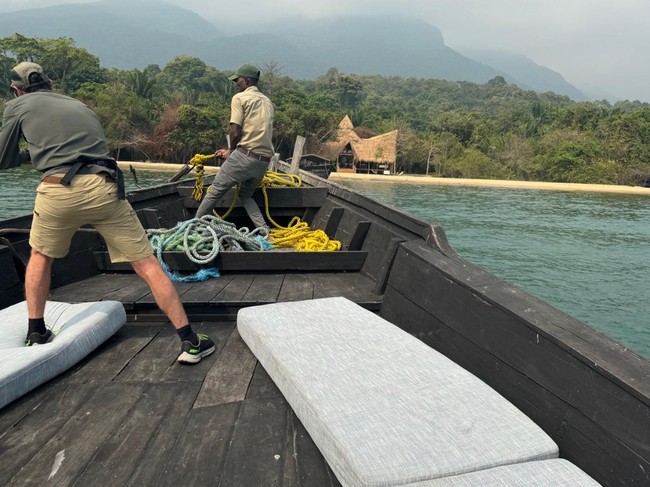
Our fellow passengers would have made a good cast of characters for another past author—Agatha Christie. It was a group of the eccentric and the not-so-eccentric, some of the former being of the objectionable neo- or not-so-neo Marxist types that inhabit most of our faculty lounges.
At this moment, while writing this part, I am staring out at Lake Tanganyika, the world’s second-biggest lake, seemingly as large as an ocean. It is surrounded by several countries, principally Tanzania and Congo, two adjoining nations that couldn’t be more different.
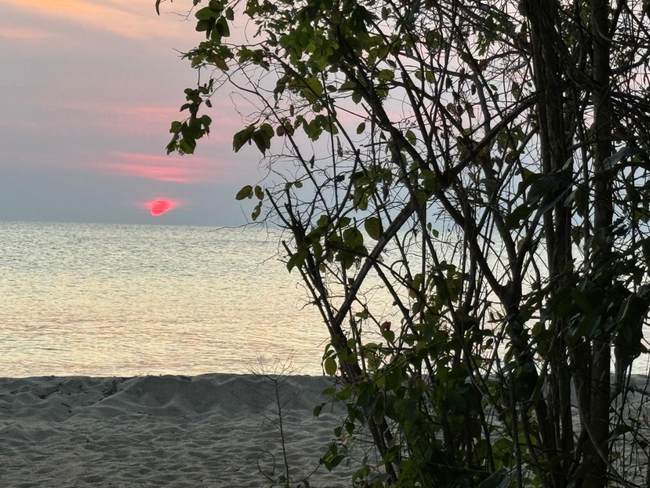
One of the people at our safari camp, the CFO of a foundation that supports the Congo’s national parks, confirmed from personal experience the extreme corruption in that nation one only reads about—the open lithium mines for EV batteries that scar the countryside. They are staffed by impoverished child laborers paid a pittance while overlords in mansions with swimming pools and personal militias look down at them. Some of the mines intruded illegally into the national parks, he told us, but no one was doing a thing about them. Congo, in essence, had no real government, only selfish officials and bureaucrats who collected “rents” and did nothing while armed gangs roamed the land.
Tanzania was more successful (and safer), with its anti-colonialist president from the sixties, Julius Nyerere, having brought his people together and urged them all to learn Swahili to communicate. He wanted to make it a Pan-African language. Tanzania has 126 tribal languages, and we were told of situations where members of the same family couldn’t understand each other today. Nevertheless, many of the appurtenances of modern life are here, including traffic jams in their cities, some high-speed trains, and the internet.
Distant Mahale National Park, however, is mostly “off the grid.” For the first time in years, I had only intermittent internet connection to check the news back home or even send pictures to friends and relations. All that could wait, even the election that, like so many before, is said to be the most impactful of our times. (Maybe it is.)
And yet for this man who co-founded the online media company PJ Media when it was Pajamas Media, was its CEO for seven years and another seven as CEO emeritus, and then spent five years as columnist and editor-at-large of The Epoch Times, and virtually lived on the ‘net for decades, it was hugely liberating to be offline, if only briefly. I should do it more often. I was under forced withdrawal from an addiction, and the better for it.
The purpose of being in Mahale, however, was not anything like that, but to view chimpanzees in the wild and, to some extent, “hang with” our closest species relatives, who share 98 percent of our DNA, in their natural habitat. Other than Jane Goodall’s Gombe, this was reputedly the best place on the planet to do that.
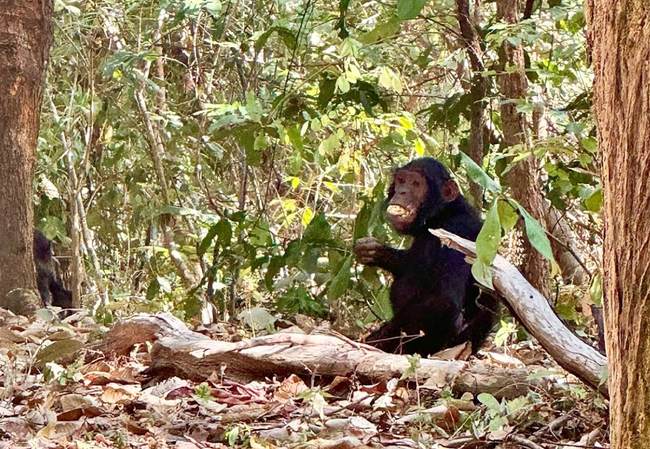
We were under the guidance of a Maasai named Butati (like “Bugatti,” he reminded us non-Swahili speakers), known as the “Chimp Whisperer,” as far as I could tell, an accurate moniker.
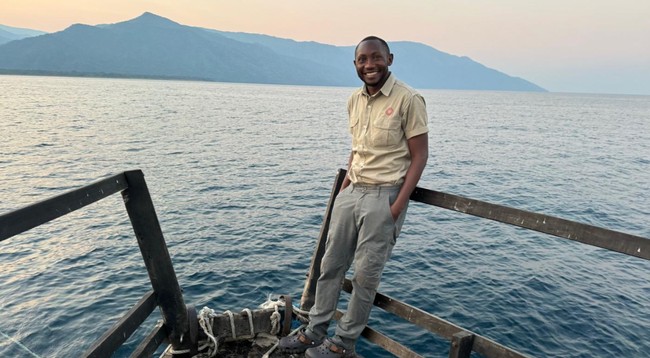
He and other guides led us up steep (no switchbacks) mountain trails through a dense jungle in pursuit of chimps our first morning—a mother with her baby. The hike was arduous, at least for me with my aging legs, despite three days a week of tennis. When drawing close to chimps, we were told to put on masks we were given because human germs do not interact well with chimpanzees and have even caused deaths.
We weren’t terrifically lucky in our chimp exploration. By our second day hike, the rascally primates had disappeared over the mountain into a valley in pursuit of their latest pleasure, a newly discovered fig variety, and were beyond any possibility of our reaching them.
Our next stop, Kigelia camp in the desert-like Ruaha National Park, was the opposite.
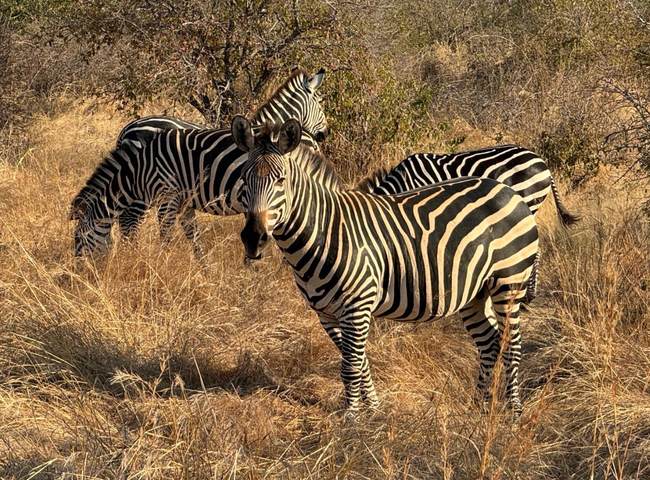
Here, riding in safari cars or on walking safaris that are mandated to be single-file, accompanied by a Nomad lookout in front and a park ranger in back—both armed with rifles for safety—we encountered an extraordinary abundance of wildlife…
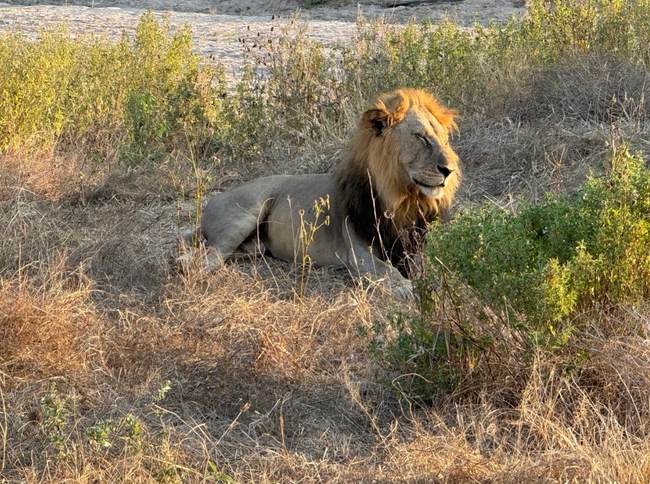
… elephants (by the dozens), giraffes (ditto, usually in groups), lions, an elusive leopard (photo at top), uncountable numbers of impala, gazelles, miniature antelopes called dik-diks, dozens of zebra, hyenas, mongoose, greater kudu (males with the most amazing horns), lesser kudu, eland, baboons galore, hippos (dangerous when riled), crocodiles, civets, monkeys and birds of all description, including various African eagles, plus this pair of African buffalo who eyed us suspiciously but then walked off.
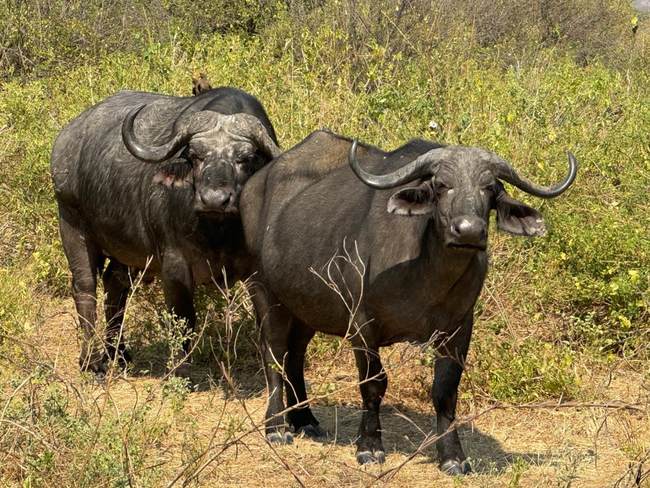
On a night safari, we briefly spotted the wild African cat, progenitor of our house cat and an endangered species our superb guide Raphael (Swahili name too complicated) had only seen once before himself.
Here he is explaining to us how the ubiquitous elephant dung (elephants evacuate in only five hours) is used for medicinal purposes by other animals.
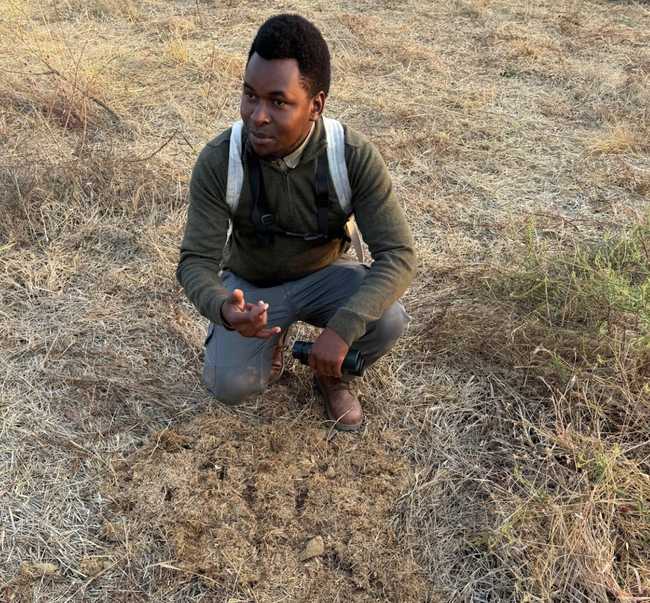
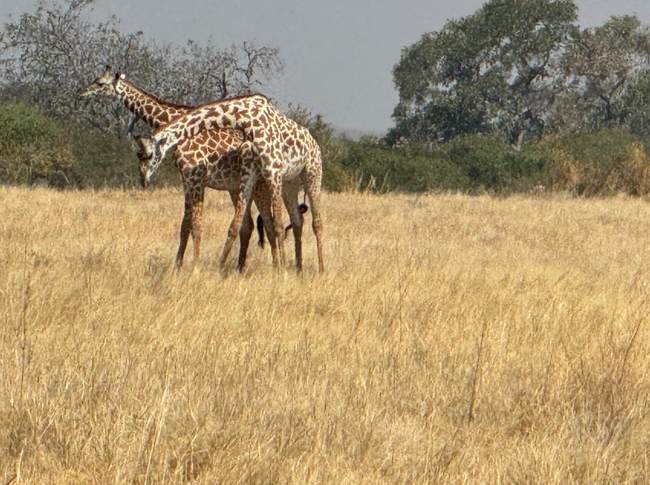
And here are some of the myriad impala in Ruaha taking shade from the noonday sun.
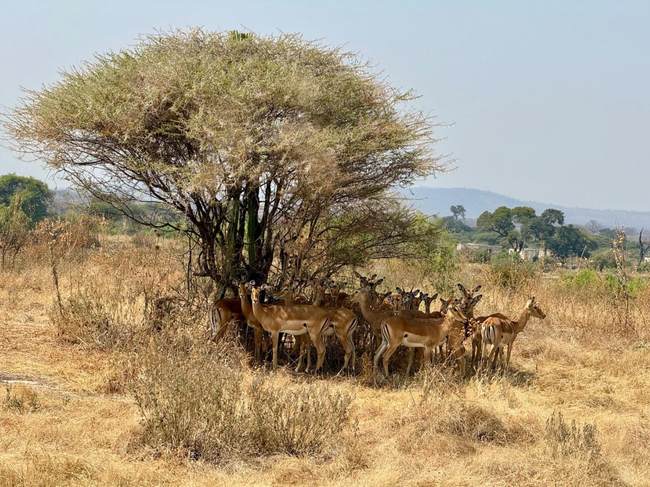
To describe how this bountiful display of animal life in the wild affects you is not easy, but it is closely akin to a religious experience.
It is seeing the natural world as it was meant to be and has been since the beginning of time, whenever that was, and your mind almost automatically turns to the Creator (uppercase deliberate). His/her creation is magnificent, from the animal world before us to the stars and beyond that we could see clearly at night.
Paradoxically, the internet connection was better in Kigelia, and we had news from home. Particularly interesting was the brouhaha over JD Vance’s statements regarding childless women (he might have added childless men). The media was predictably using it to score their tedious political points, yet from the perspective of being on safari and viewing so many animal kingdom families, patriarchal and matriarchal, that media discussion had more than its share of the usual snide banality. Vance, whether accidentally or on purpose, was raising a question of considerably more import than one normally hears in a political campaign: Why we are here?
During some brief discussions of this with some of the wonderful and kind Tanzanians who worked for Nomad, including our guide Raphael, it was hard for them to comprehend why having children would even be an issue. For them it is part of the natural order of things, as it is for many religious people in the West.
I will have more to say about this as the Substack goes on, but now, sitting in my hotel room in Dar es Salaam, preparing to make the long voyage home, I have more optimism for Africa than I would have expected—and sadly a bit less for the U.S. and the West, unless we wake up.
Returning to the political world from the natural world at around 7:30 local time on our last Tanzanian morning, the hotel dining room was filled for breakfast with apparently well-heeled Chinese business types, obviously here for work purposes, many in suits and ties in the hot climate. The Chinese are heavily embedded in Africa through their belt-and-road program, which has been much reviled in our press for being a covert attempt to buy the world. (The Chinese grant large loans for public works, then own the projects when the loans are not paid off.)
Tanzanians I talked to, interestingly, were well aware of this strategy but basically shrugged. The Chinese, after all, helped them build needed roads and bridges. They did something concrete. No matter who owned it in the end it would be useful to them. The Americans and the Europeans just gave foreign aid that always seemed to end up in the maw of corrupt politicians. Worth thinking about.
On the way home on Ethiopian Air, I got deeper into "The Green Hills of Africa." As the author himself might put it, “It was good.”
More specifically, this great master of American prose had a lot of interesting things to say about Africa and hunting. He and his party were well aware then of the negative aspects of their activity as they set out to kill rhinos and kudu, constantly debating if what they were doing was just, but going ahead anyway despite all, driven in an almost atavistic way. They tell themselves their intent is to shoot the animal so cleanly his death is relatively painless. But more than once, the author and his party have trouble achieving that, adding moral complexity to the book.
But what makes “The Green Hills of Africa” truly worth reading, besides the immaculate prose style, are Hemingway’s discussions throughout of the writers he is reading while on safari—Tolstoy, Turgenev, and others—that are more insightful (and practical for writers) than any academic critics I have encountered. This is hardly surprising.
We all know that Hemingway came to a sad end. I don’t want to be the umpteenth person to speculate on why, nor do I have any particularly original thoughts on the matter. But he was a great adventurer, a model for his time for those who wanted to experience God’s world. Safaris are exactly that. For most of us lucky enough to go on one—have the time, energy, and wherewithal—they are usually a once-in-a-lifetime experience to be treasured always. Sheryl and I went on one just at the time we had decided to start this Substack. And so it has provided our initial offering.
You are cordially invited to join us at American Refugees.


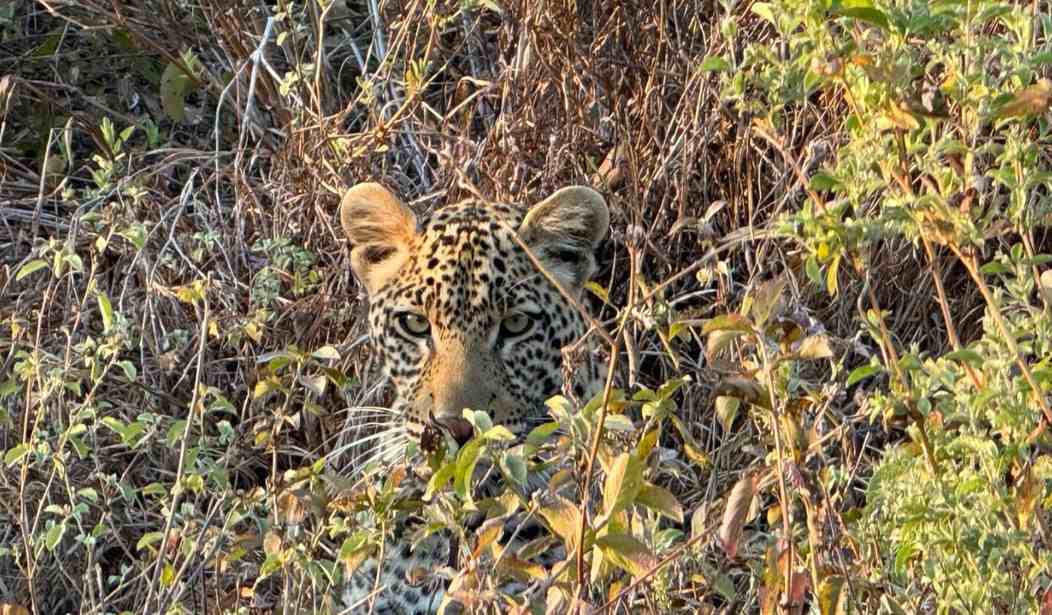






Join the conversation as a VIP Member